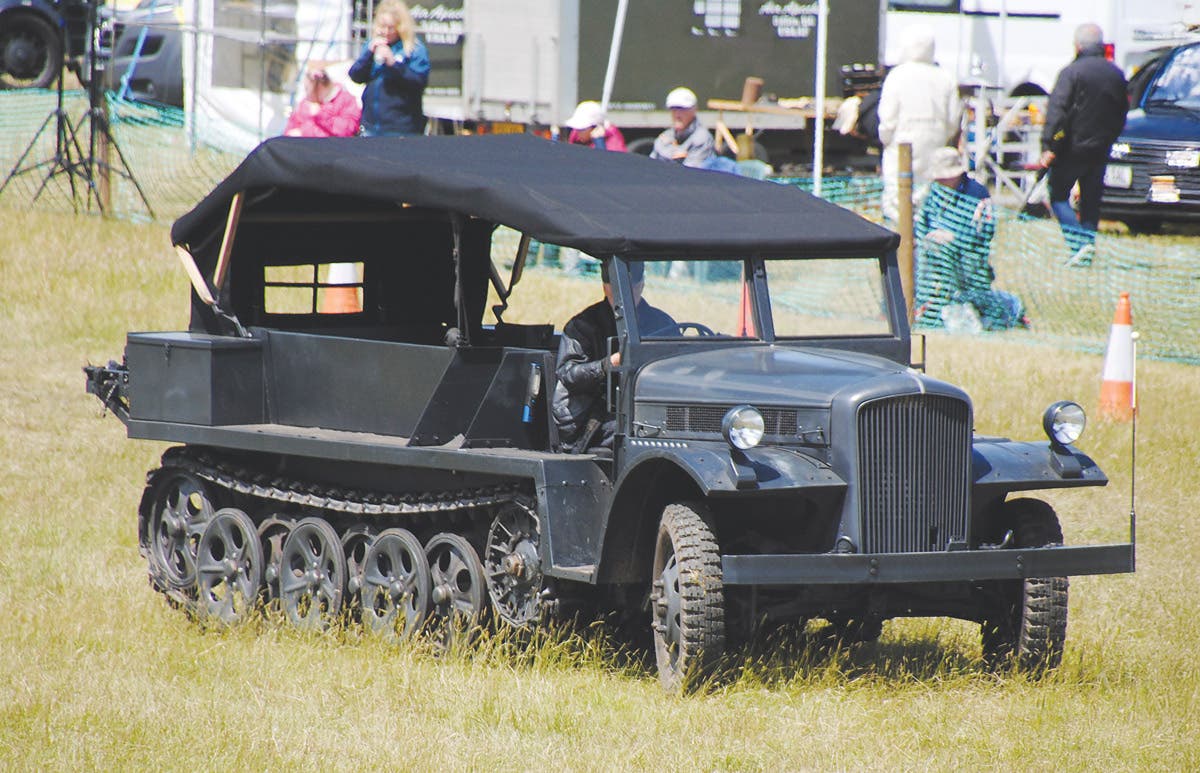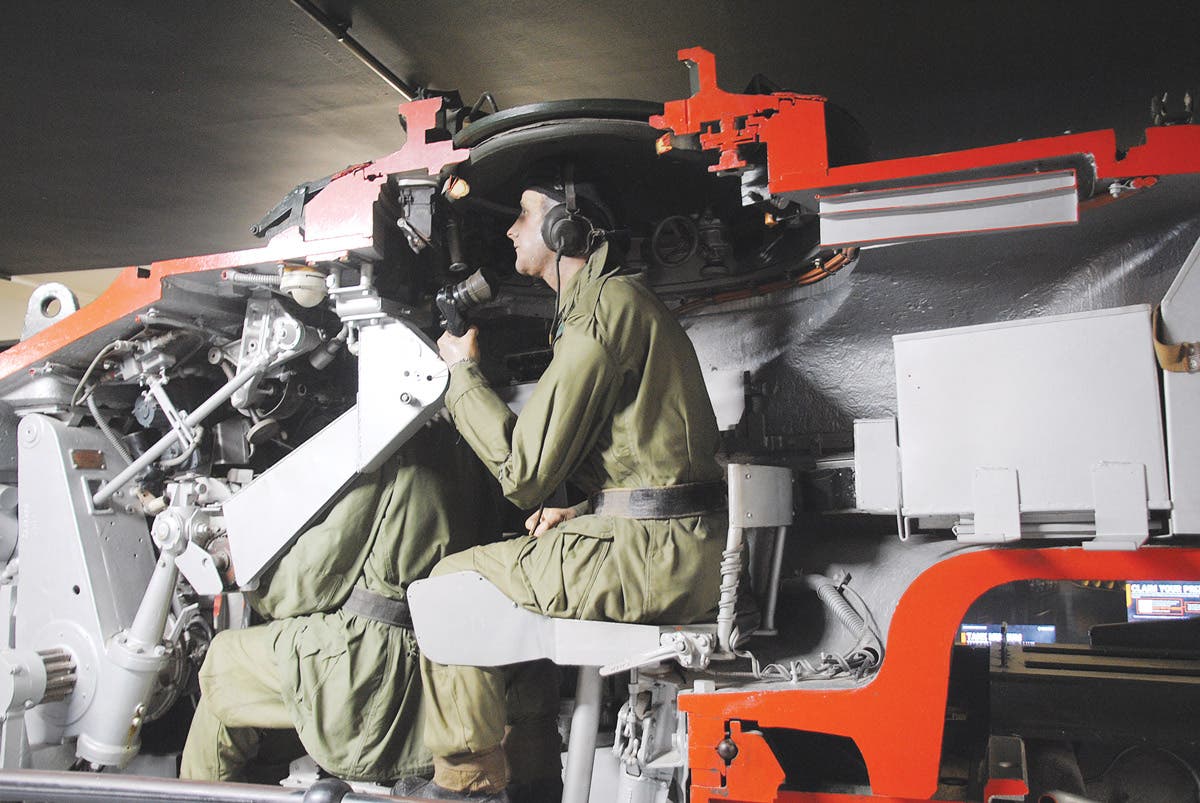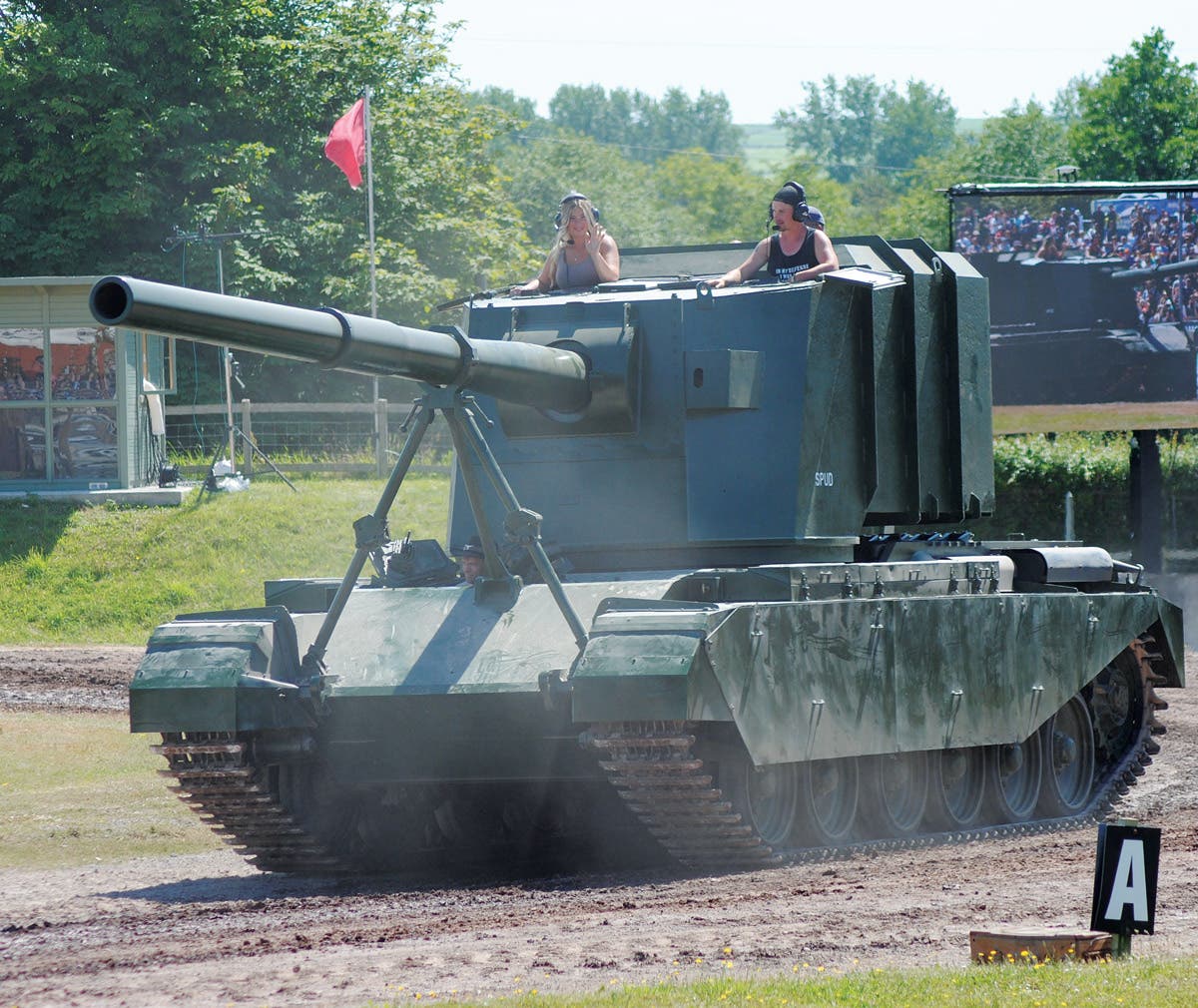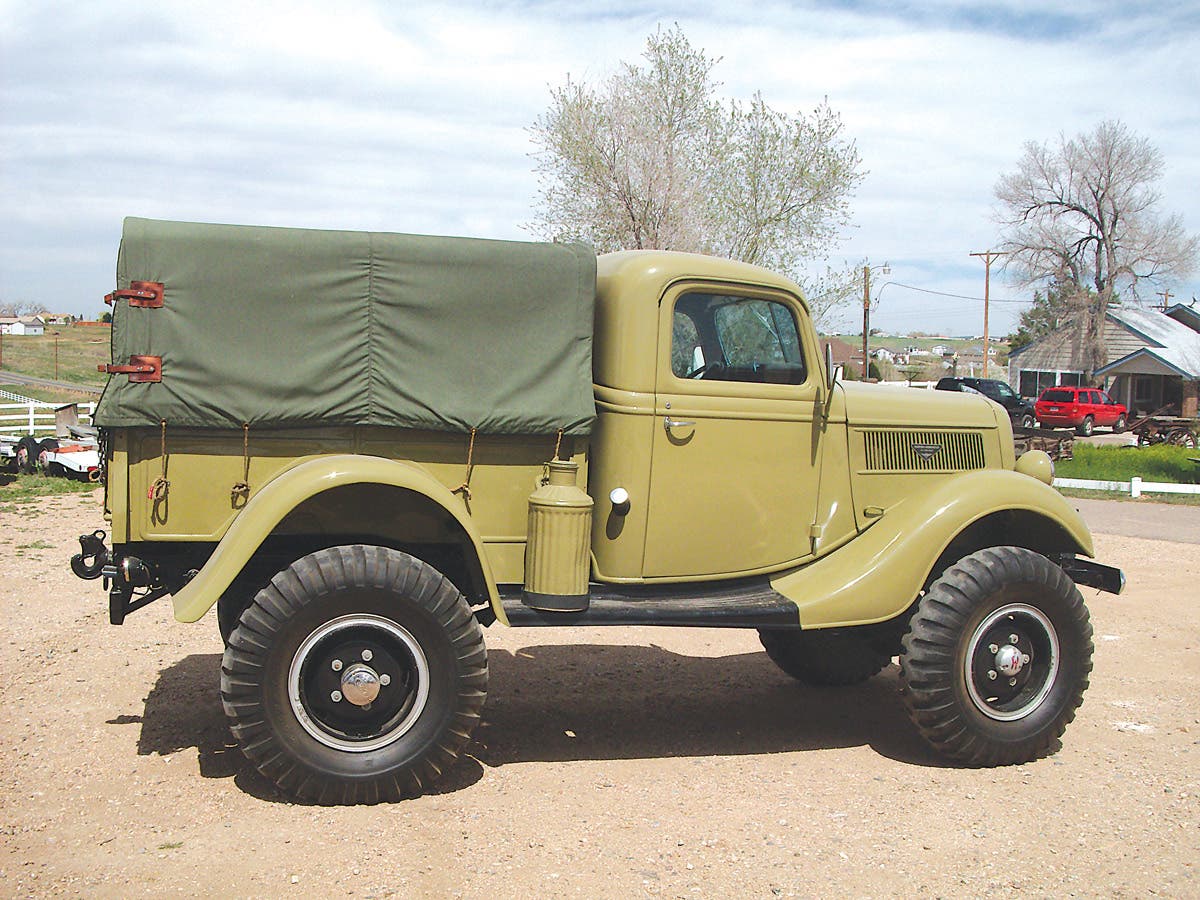During WWII, the WC-62/WC-63 was called the “New” Dodge
The 1-1/2-ton Trucks were upgraded versions of the famous WW2 3/4-ton Dodge WC-51 and WC-52 weapons carriers: See details and gallery of trucks
(editor's note: This text of this article originally appeared in Army Motors, Sept-Oct, 1943)
The New 1-1/2-Ton 6x6 Dodge
It’s the personnel-and-cargo truck of the year—big brother of the ¾-ton—100% gutsy
If (heaven forbid) you ever took your nose out of ARMY MOTORS long enough to glance at a newspaper, you’d see plenty of new Army vehicles in action. The 1/4-ton amphibian, the “priest” with its 105mm howitzer —spectacular stuff like that. But you’d probably have to poke your nose back into this magazine—right here at this page—to come across the new 1 1/2-ton 6x6 Dodge. All right—so it isn’t spectacular. So it doesn’t swim or drop bombs or climb trees. It’s just the best all-around military truck in its class, that’s all.
That fact won’t surprise you, either, after you’ve been told that this 1-1/2-ton 6x6 Dodge is basically the famous 3/4-ton 4x4 Dodge-with extras. It’s 49-1/16 inches longer, 1,675 pounds heavier, has one more driving axle, carries double the payload, and tows 3-1/2 times as much (3,500 pounds). Of course, there are other differences when you get down to fine points. But the fact remains that most of this baby’s unit assemblies are interchangeable with those of your ¾-tons — and further changes in the 3/4-ton will increase the interchangeability of the parts which make up those assemblies. Think what that means — in terms of parts supply and familiarity with maintenance requirements. Hats in the air, men!
Interchangeability wasn’t the first consideration when this nifty vehicle was designed. But it was an important factor for obvious reasons: The new trucks could be built faster, many of the parts already stocked throughout the world could be used in them—most servicing operations would be second nature to drivers and mechanics with experience on 3/4-tons. Just to give you an idea—both trucks can use the same engine, clutch, transmission, front axle, steering gear, wheels, brakes, tires, radiator, fan and fan belt, windshield, seats, body sheet metal, and electrical system (including generator, starting motor, and distributor).
Sounds perfect, doesn’t it? Well it’s good, but not quite so good as that. Some of the assemblies on the ¾-ton weren’t heavy enough for the 1 1/2-ton, so they’ve been changed to suit both vehicles. The front axle is an example. Front axles now in production for both the 1 1/2-ton and the 3/4-ton (part number 928926) have a 9 5/8” ring gear and can be used interchangeably. However, most of the axles now in spare parts stocks and in currently used 3/4-tons (part number 922854) are the old type, which has 8 3/4” ring gear. This means that 1) an old type axle can be installed in the ¾-ton only, and 2) a new type axle can be installed in either vehicle, but should be saved for the 1 1/2-tons when possible because the quantity of new type assemblies is limited.
Keep your eyes open. This condition may occur in other assemblies if further production changes are made as a result of field experience.
After pausing for breath, we hasten to add that the prime consideration, naturally, was the need for a vehicle that could do a tough, specific job—a vehicle brimming over with what the AR’s call “satisfactory military characteristics”. Here again, the 3/4-ton Dodge was a ready-made flying start. It had seen hard service in all extremes of climate, over all sorts of terrain, with all kinds of drivers — kind and unkind. Its worth in this war had been soundly established. So — when the infantry called for a front-line vehicle with high mobility, low silhouette, greater personnel and cargo capacity in relation to size—the 3/4-ton got a super twin brother. When placed end-to-end, they look like the picture across the page. Side-by-side, the family resemblance is even more striking (see page 180).
Don’t jump to the conclusion that the 1 -1/2-ton 6x6 Dodge is strictly an infantry truck. All arms and services will have their share in due time. And the gutsy performance which the infantry demanded will come in mighty handy everywhere. Here are the high spots of that performance—demonstrated in some of the most merciless tests any military vehicle has undergone: The new truck has terrific stability on rough terrain, thanks to its low center of gravity and wide tread (which is the same, front and rear). Six-wheel drive and high ground clearance get it through and over heaps of hazards in cross-country operation. Good angle of approach and departure allow the truck to go up and down steep banks without digging the bumper or rear frame into the ground. Load distribution is almost equal on all three axles—tires are big and plump — so the 1 1/2-ton has flotation like a fat lady-in a bubble bath. It rides (more or less) like a dreamboat — and rolls through mud or sand with surprising ease. Another thing, the low silhouette makes this truck an elusive target —and its low floor makes the loading and unloading of troops or cargo a fast and simple job. In short, the 1 1/2-ton 6x6 has what it takes to get where it’s going—in combat zones or anywhere else.
Getting back to the subject of interchangeability, here are some further facts of special interest:
ENGINE—Same as in all 3/4-ton 4x4 Dodges, developing 180 foot-pounds of torque at 1,200 r.p.m. and 92 horsepower at the governed speed of 3,200.
The 1-1/2-ton has a crankcase ventilating system (see below) and manifolds are tapped for primer installation—which is all just like the newest 3/4-tons, but not the older models. However, these differences won’t affect the interchangeability of basic engine parts.
CRANKCASE VENTILATING SYSTEM—Has only one moving part, a vacuum - operated valve which cuts down or steps up air circulation in keeping with speeds. Inspection and cleaning of this valve (required each 1000 and 6000 miles by PM Work Sheet, AGO Form No. 461) should prevent any building up of carbon deposit which might block the vacuum opening.
COOLING SYSTEM—Improved by the addition of a surge tank and attachments, to provide a fully closed system and reduce loss of coolant to a minimum. This change does not affect interchangeability.
ELECTRICAL SYSTEM—Same as in all 3/4-tons with 6-volt systems. The 1-1/2-ton is similarly suppressed and bonded to eliminate radio interference.
TRANSFER CASE—An important difference here, which is why the transfer cases are not completely interchangeable. Using the same engine and axle ratio, the 1-1/2-ton Dodge has a new two-speed transfer case to handle the added load. This assembly provides either a direct drive or a 1-1/2-to-1 reduction, as required—thus compensating practically pound-for-pound for the additional payload. As a safety measure, controls are arranged so that the reduction or low-gear combination can’t be used except when you’re using front-wheel drive. Parts within the transfer case are largely interchangeable with the 3/4-ton — including sliding shafts, gear-shaft assemblies, and their bearing cones and cups.
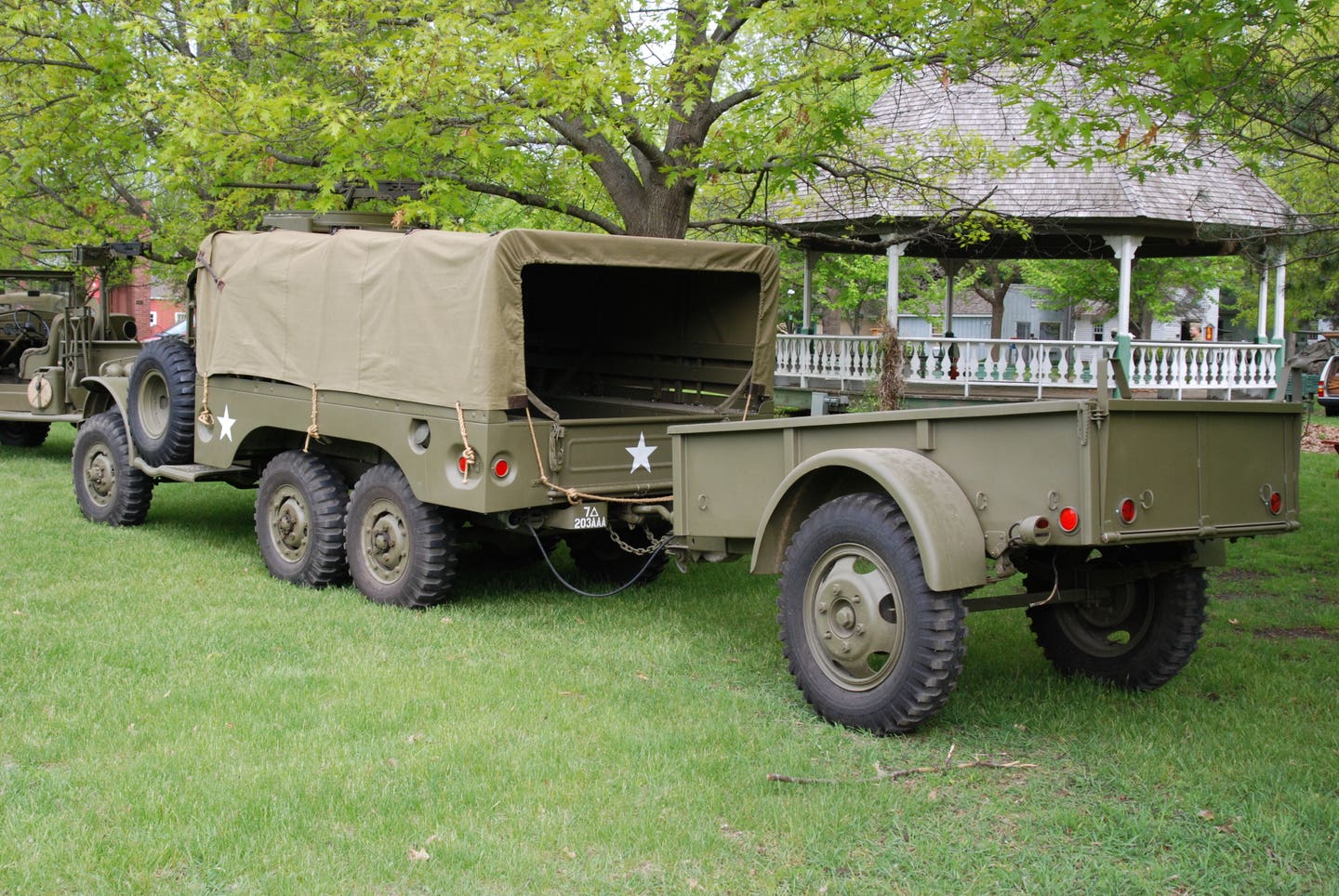
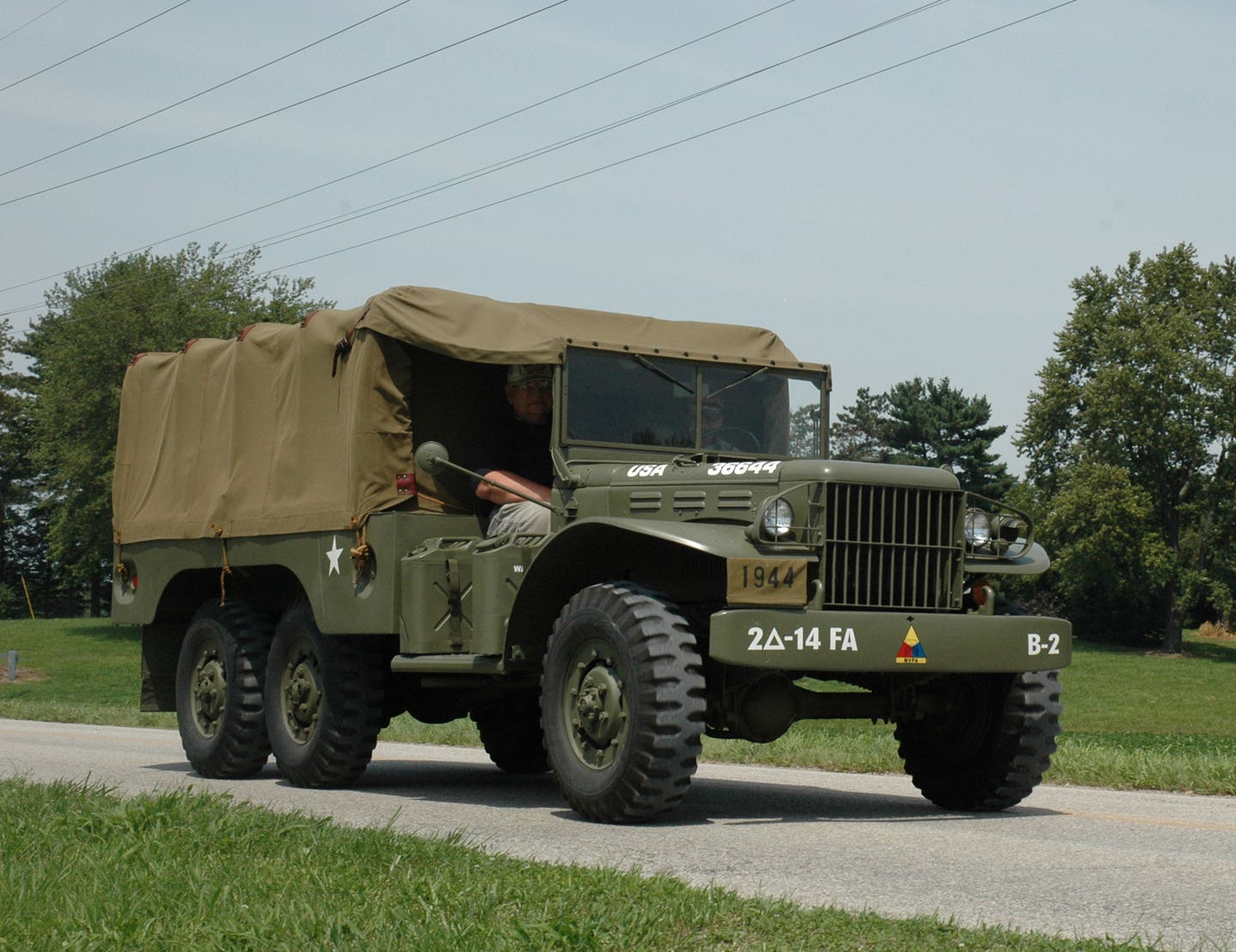
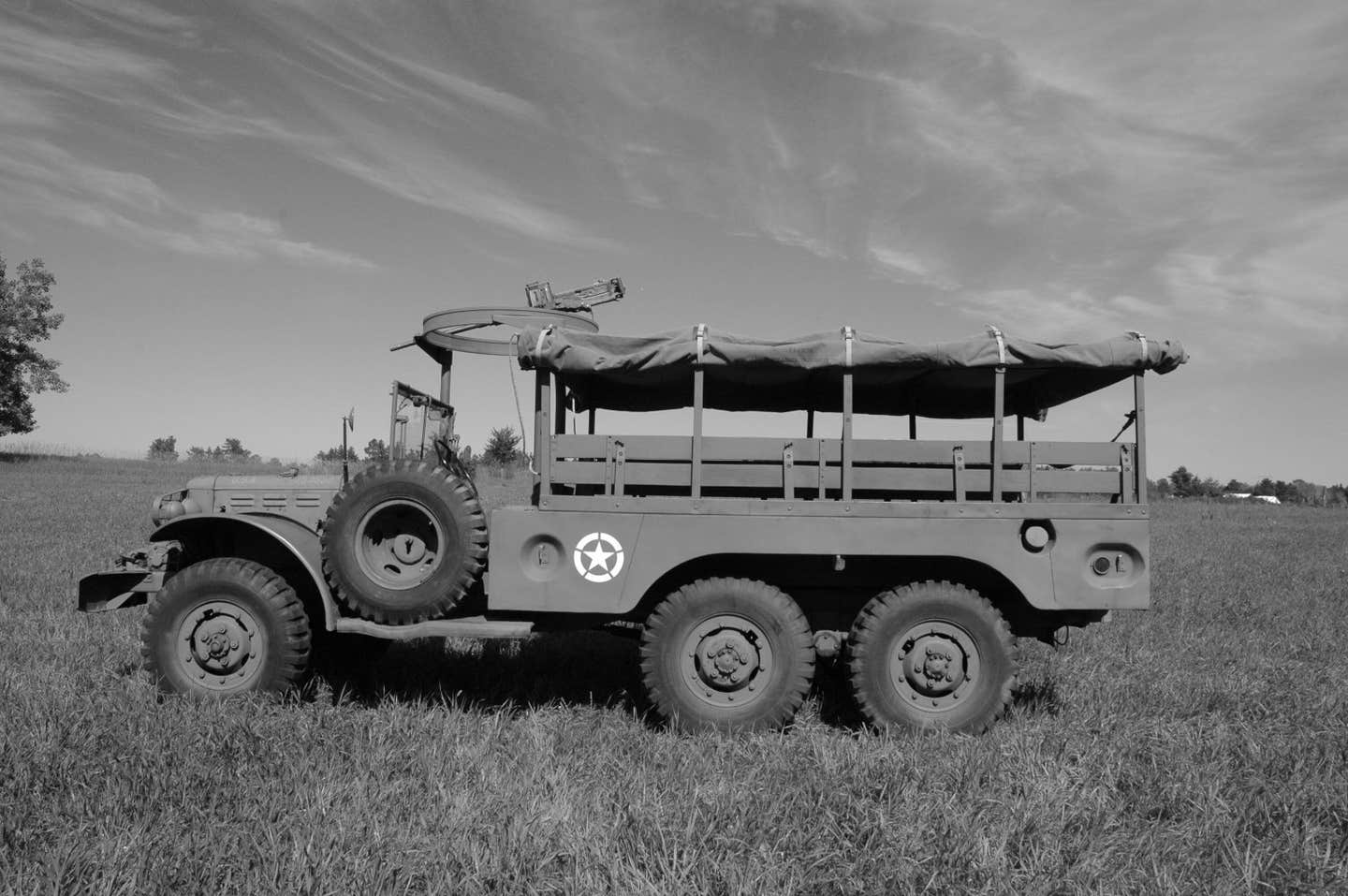
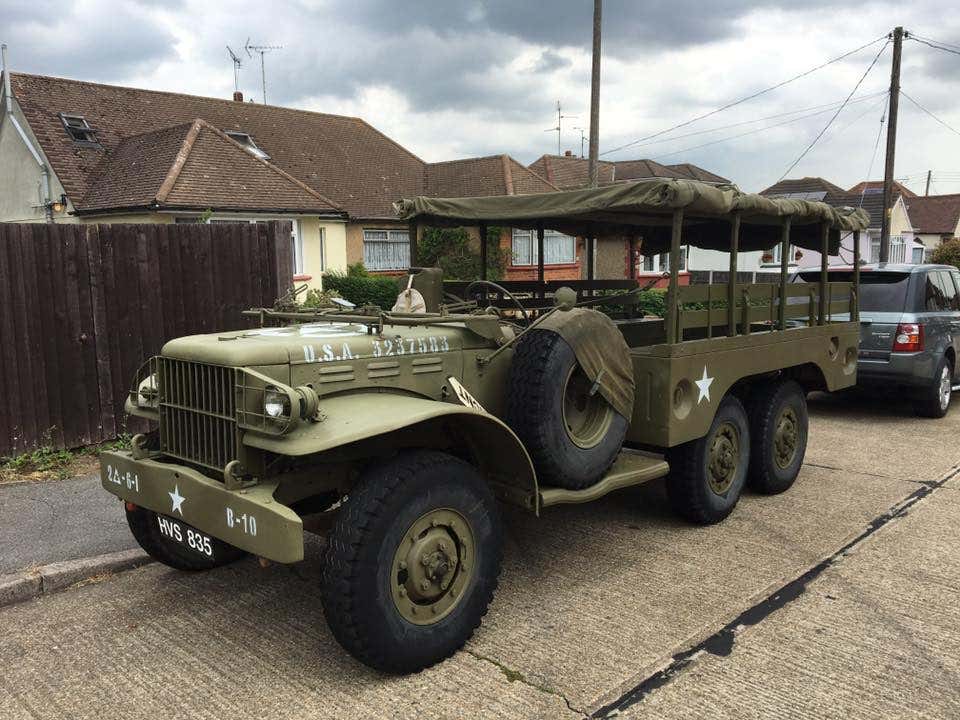
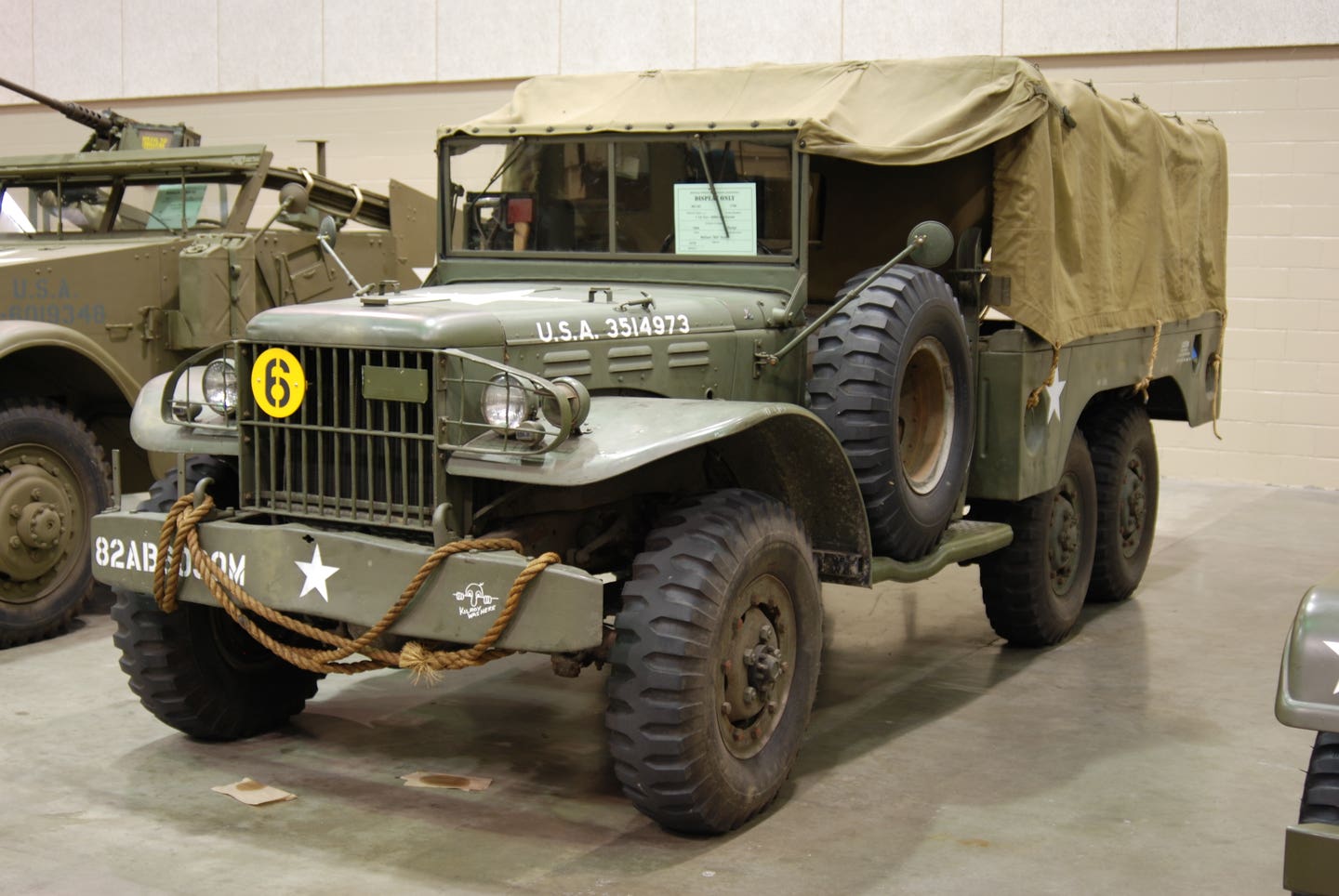
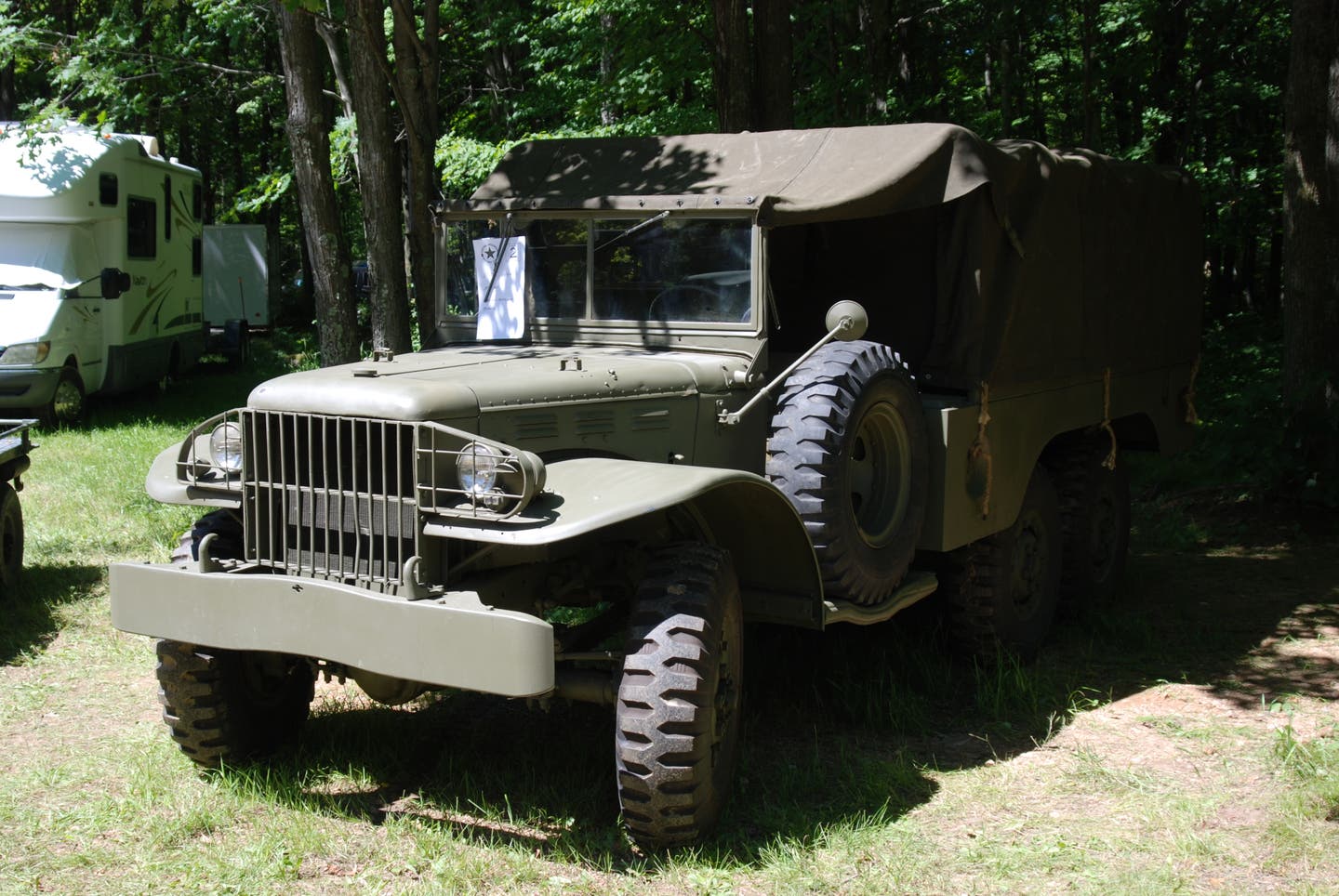

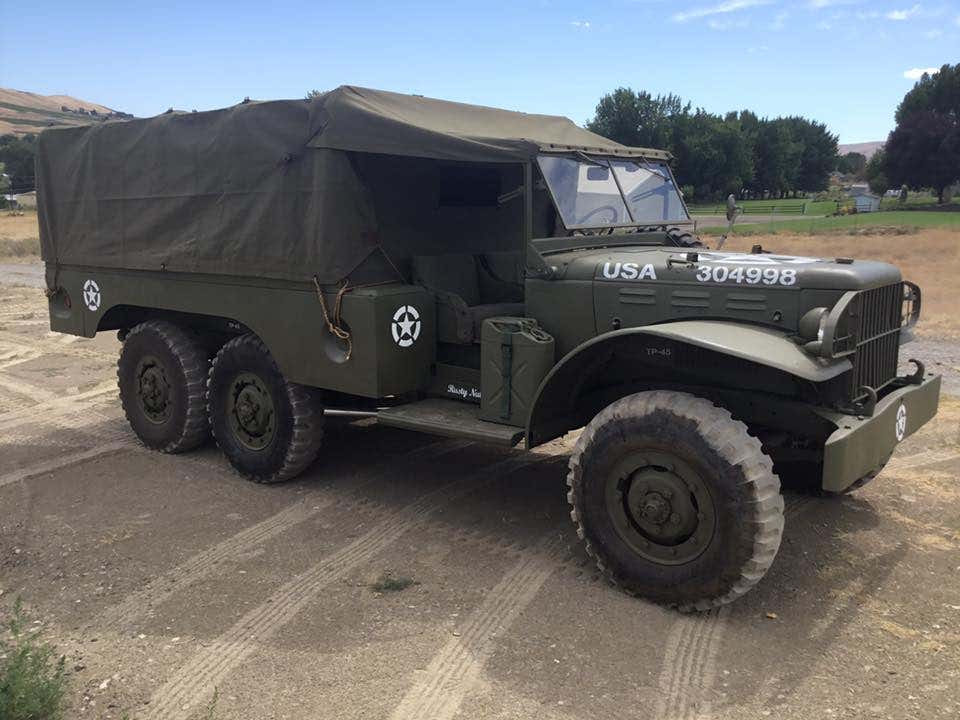
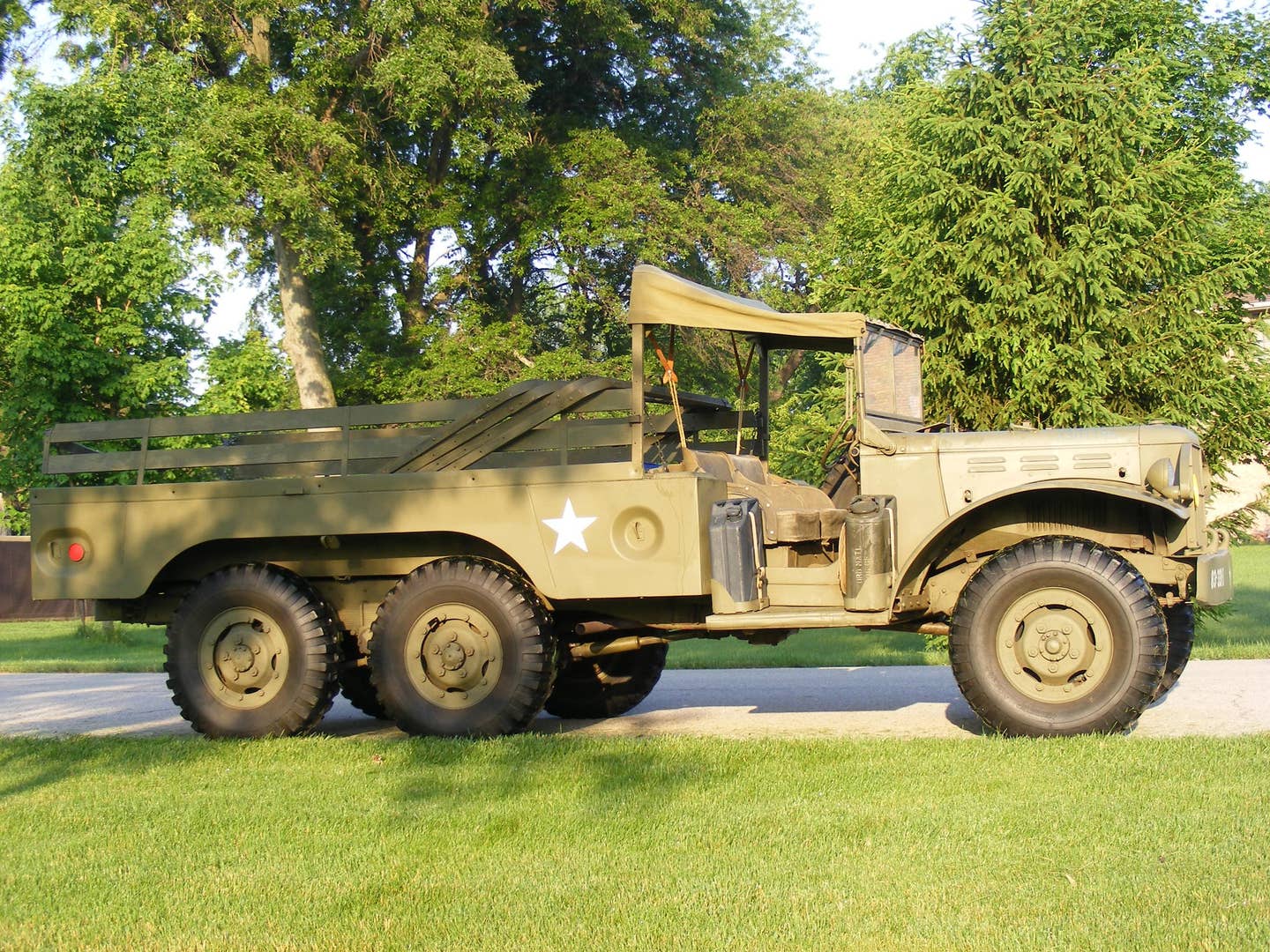
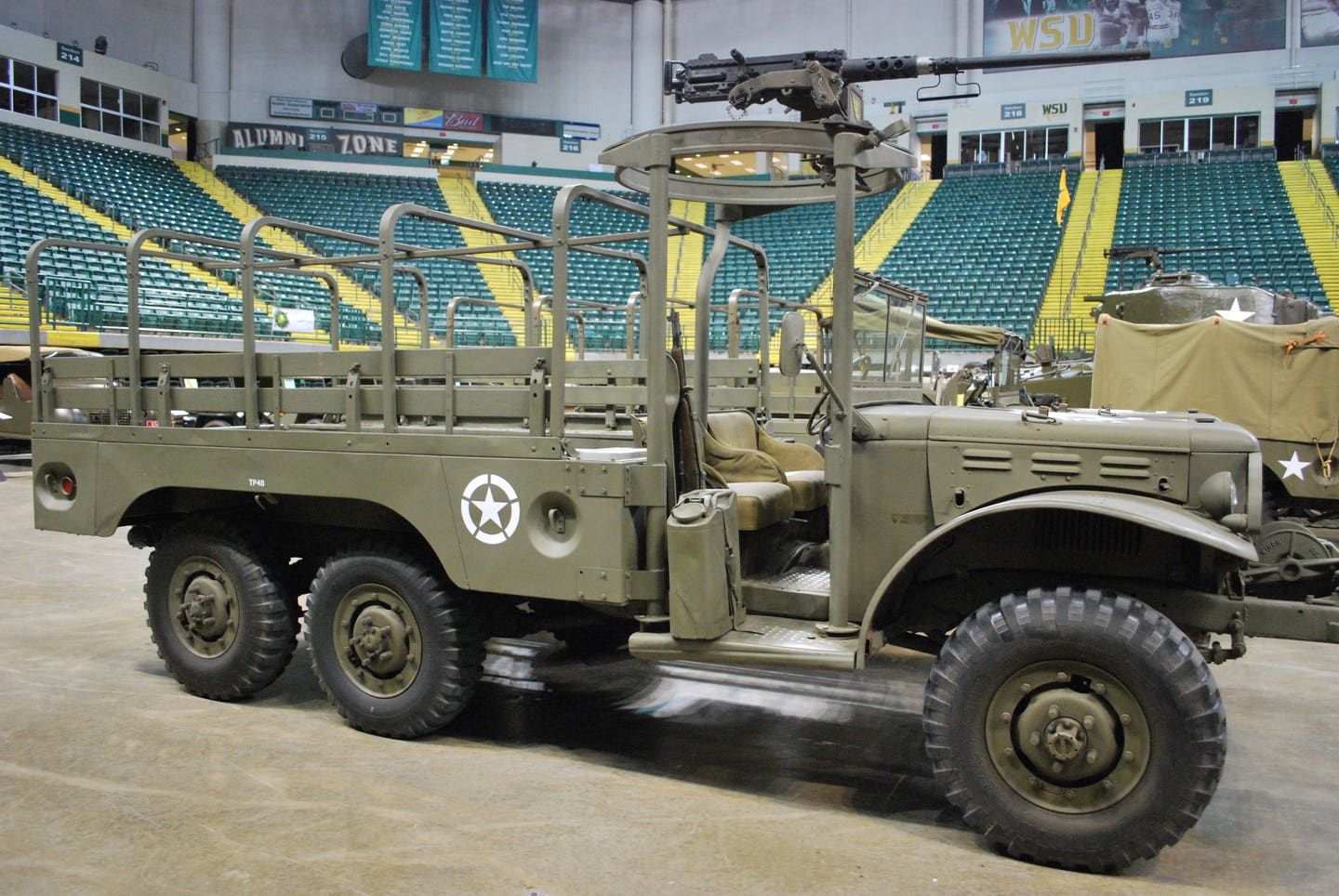

PROPELLER SHAFTS AND JOINTS—The 6x6, of course, has five propeller shafts — while the 4x4 has three. However, the front and intermediate shaft assemblies, with their joint component parts, are interchangeable. So are the joint yokes, where they’re used on both vehicles, except for the hand-brake-drum yoke on the 1-1/2-ton.
AXLES-You’ve already read the story on front axles earlier in this article. Some are interchangeable and some are not. In the rear, of course; the bogie construction prevents interchangeability of complete assemblies though some of the parts are interchangeable.
BRAKES—Same as on the 3/4-ton, plus added brake lines required by the tandem axle hook-up. Due to the two-speed transfer case, the hand brake on the 6x6 is mounted behind the transfer case rather than at the transmission as on the 4x4.
STEERING — Heavier steering arm and drag link, but still interchangeable, in combination, with the 3/4-ton job.
FRAME — Different, of course, from the 3/4-ton. But most cross-members, running-board brackets, etc., are identical.
WINCH—About one in every three of the 1-1/2-ton trucks will come equipped with a winch.
WHEELBASE—On the 1 1/2-ton its 125 inches—figured, as on all 6-wheeled vehicles, from the front axle center to - a point halfway between the two rear-axle centers. Distance from the front axle to the forward rear axle is just 104 inches, only 6 inches more than on the 3/4-ton—so the 1-1/2-ton has about the same obstacle-clearing ability on uneven round.
Enough of this. When you get your 1-1/2-ton 6x6 Dodge, you’ll get TM 9-810—which tells all. The “all” includes everything you need to know about its operation and organizational maintenance—with proper emphasis (and revealing photographs) on preventive-maintenance inspections.
This truck’s a honey. Keep it sweet!
You may also like:
From the staff of North America's no. 1 historic military vehicle source -- Military Vehicles Magazine




